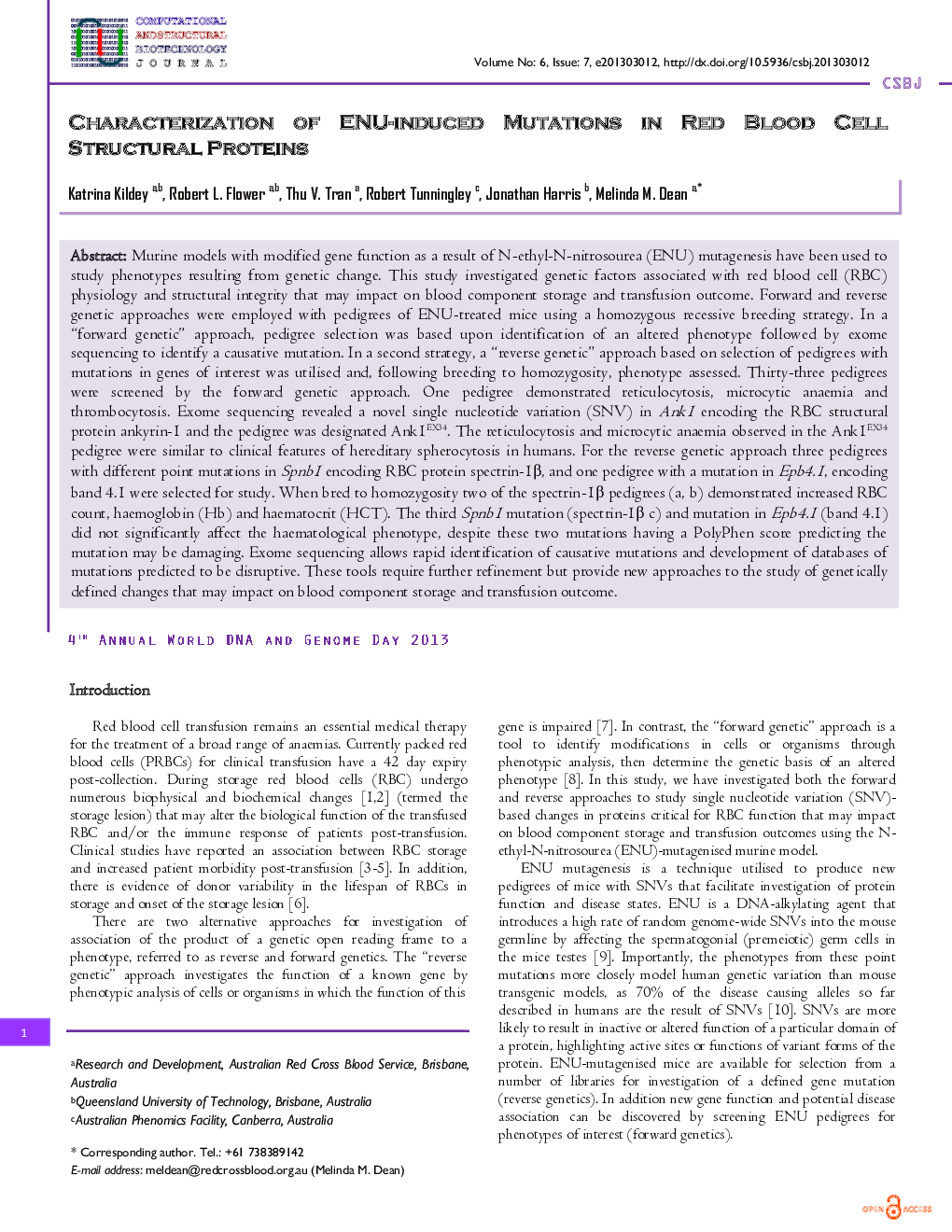| کد مقاله | کد نشریه | سال انتشار | مقاله انگلیسی | نسخه تمام متن |
|---|---|---|---|---|
| 2079341 | 1079861 | 2013 | 10 صفحه PDF | دانلود رایگان |

Murine models with modified gene function as a result of N-ethyl-N-nitrosourea (ENU) mutagenesis have been used to study phenotypes resulting from genetic change. This study investigated genetic factors associated with red blood cell (RBC) physiology and structural integrity that may impact on blood component storage and transfusion outcome. Forward and reverse genetic approaches were employed with pedigrees of ENU-treated mice using a homozygous recessive breeding strategy. In a “forward genetic” approach, pedigree selection was based upon identification of an altered phenotype followed by exome sequencing to identify a causative mutation. In a second strategy, a “reverse genetic” approach based on selection of pedigrees with mutations in genes of interest was utilised and, following breeding to homozygosity, phenotype assessed. Thirty-three pedigrees were screened by the forward genetic approach. One pedigree demonstrated reticulocytosis, microcytic anaemia and thrombocytosis. Exome sequencing revealed a novel single nucleotide variation (SNV) in Ank1 encoding the RBC structural protein ankyrin-1 and the pedigree was designated Ank1EX34. The reticulocytosis and microcytic anaemia observed in the Ank1EX34 pedigree were similar to clinical features of hereditary spherocytosis in humans. For the reverse genetic approach three pedigrees with different point mutations in Spnb1 encoding RBC protein spectrin-1β, and one pedigree with a mutation in Epb4.1, encoding band 4.1 were selected for study. When bred to homozygosity two of the spectrin-1β pedigrees (a, b) demonstrated increased RBC count, haemoglobin (Hb) and haematocrit (HCT). The third Spnb1 mutation (spectrin-1β c) and mutation in Epb4.1 (band 4.1) did not significantly affect the haematological phenotype, despite these two mutations having a PolyPhen score predicting the mutation may be damaging. Exome sequencing allows rapid identification of causative mutations and development of databases of mutations predicted to be disruptive. These tools require further refinement but provide new approaches to the study of genetically defined changes that may impact on blood component storage and transfusion outcome.
Journal: Computational and Structural Biotechnology Journal - Volume 6, Issue 7, March 2013, Pages 1–10